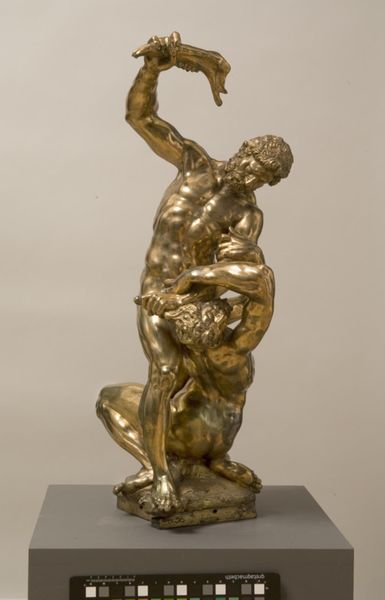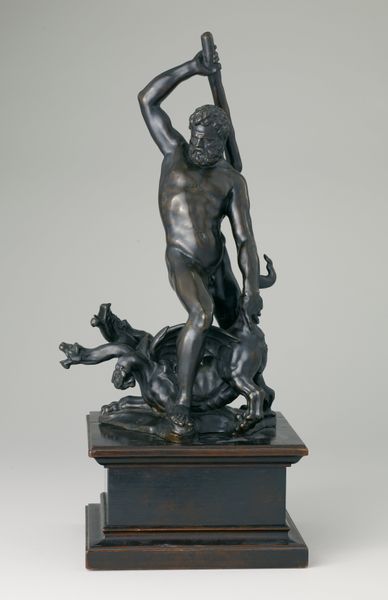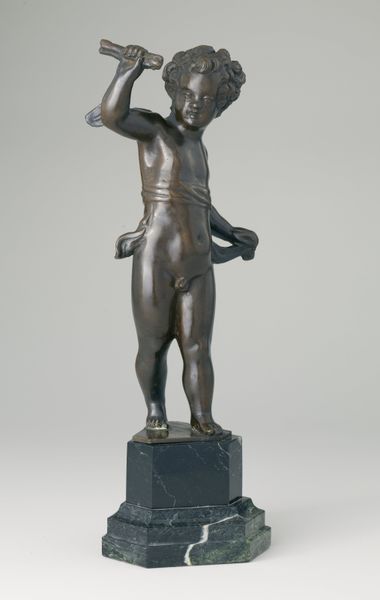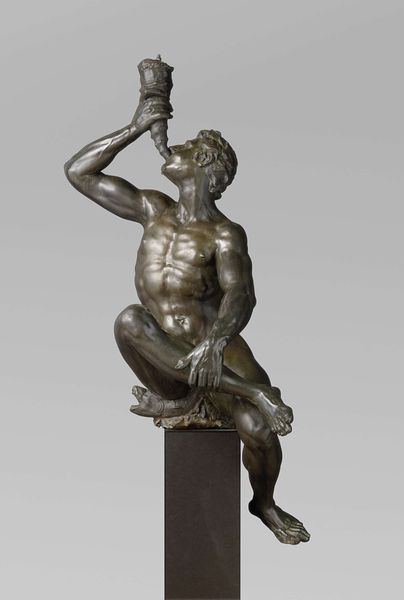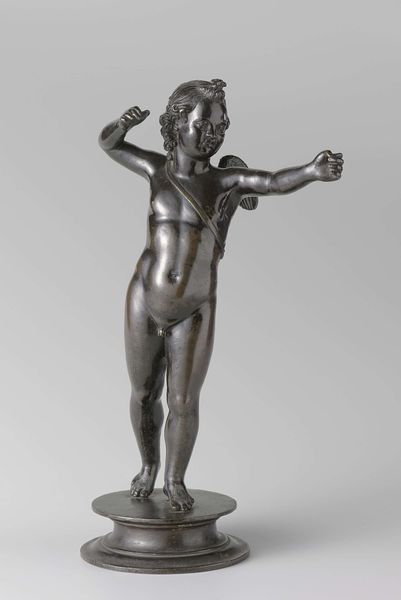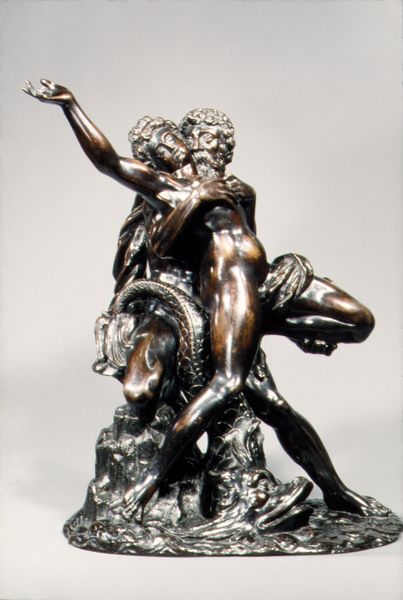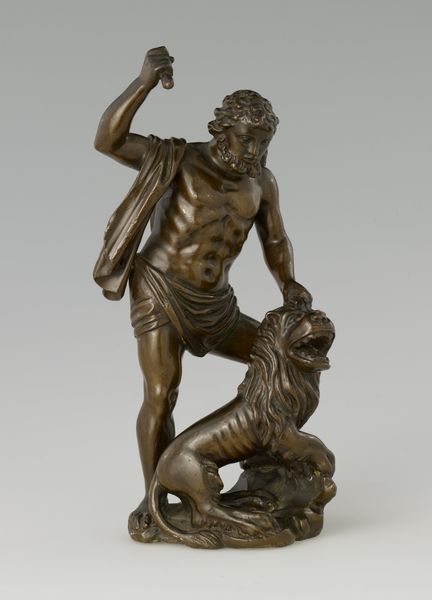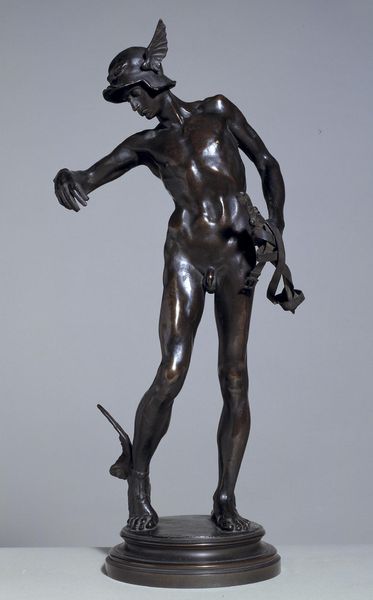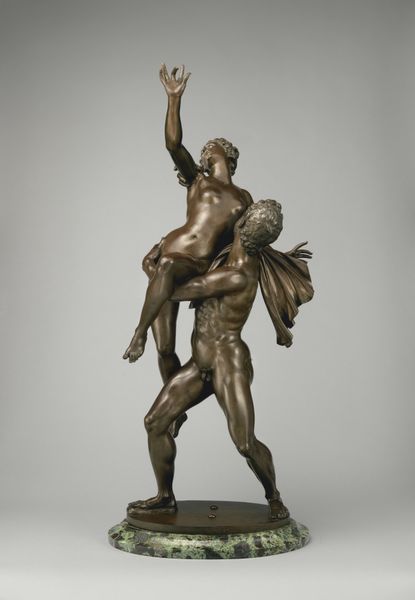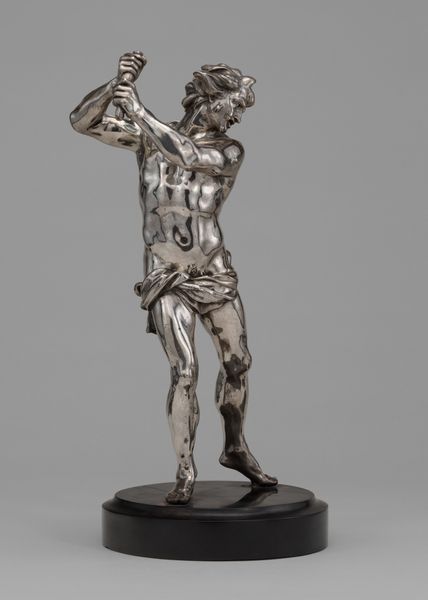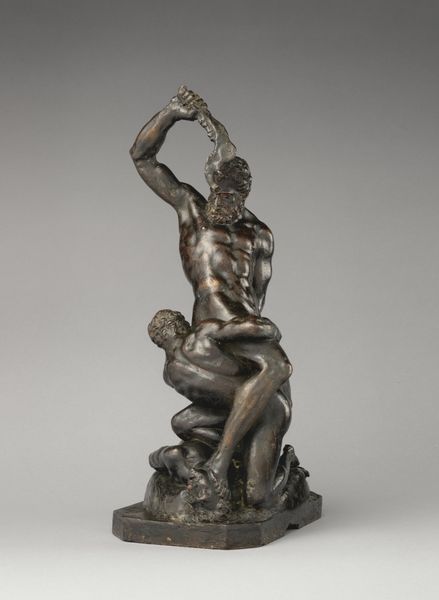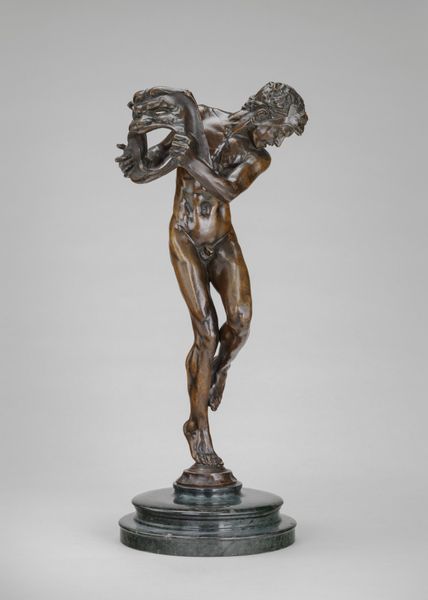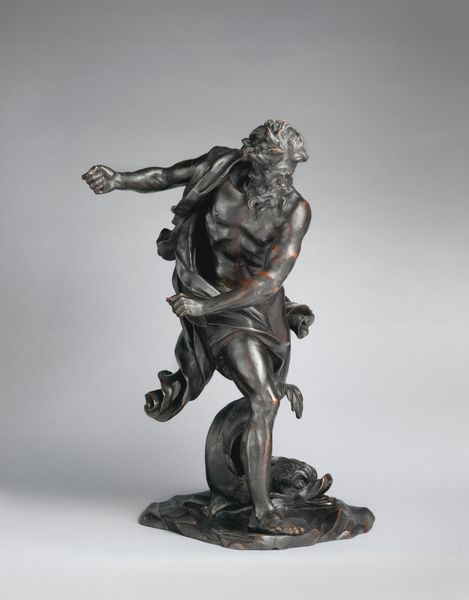
bronze, sculpture
#
narrative-art
#
baroque
#
sculpture
#
bronze
#
figuration
#
sculpture
Dimensions: 65 cm (height) x 41 cm (width) x 29 cm (depth) (Netto)
Editor: We're now looking at "Lazarus," a bronze sculpture created around 1615 by Adriaen de Vries. It has such a dynamic energy to it! I’m struck by the twisting pose and the polished bronze finish. What aspects of the composition stand out to you? Curator: Focus, initially, on the torsion. The contrapposto is pushed to an extreme, is it not? Observe the implied lines—the curve from the extended hand, through the torso, and down to the supporting drapery creates a visual rhythm, and how does that contrast to the more static planes of the base? Editor: It’s like a spiral! I also notice the surface is so smooth, catching the light differently across the planes of the body, while the drapery is much more textured, with a slightly duller finish. How does that play into your interpretation? Curator: Precisely. De Vries manipulates texture and finish to articulate form. The reflective skin versus the matte fabric establishes a clear distinction. What does this heightened contrast do to the focal points of the statue? Does it lead your eyes up to Lazarus's face? How does it play against the positioning of the dogs below him? Editor: Definitely! It pulls your eye to his face and outstretched arm, and back down to the dogs who appear to be reacting to him. I hadn't quite seen that balance before! I see how important surface and shape are in how we perceive the sculpture's drama. Curator: Exactly. By analyzing those inherent properties—line, form, and texture—we can unlock an appreciation for de Vries's technical virtuosity, yes? Editor: Yes, absolutely. I'll certainly never look at a bronze sculpture the same way again! Curator: Indeed. This detailed formal analysis enables a deeper connection to the artist’s intention and overall creation.
Comments
statensmuseumforkunst almost 2 years ago
⋮
The two statuettes Lazarus and Cain Killing Abel can be viewed equally well from all sides because the figures spi-ral around their own axis, forming a serpentining figure. This serpentinata pose is typi-cal of Mannerism, a courtly style that De Vries adopted as a young man while studying under the sculptor Giambolo-gna in Florence. On Danish soil Adrian de Vries is best known for the Neptune Fountain (1615–18) that Chris-tian IV commissioned for Frederiksborg Castle in Hillerød. Like the fountain, Lazarus and Cain Killing Abel were created in De Vries’s old age. The statuettes appear in eighteenth-century invento-ries of the Danish royal collec-tions, but may well have been acquired at an earlier date. Perhaps De Vries gave Chris-tian IV the statuettes himself in connection with the com-missioning and payment of the Neptune Fountain.
Join the conversation
Join millions of artists and users on Artera today and experience the ultimate creative platform.
statensmuseumforkunst almost 2 years ago
⋮
The statuettes Lazarus and Cain Slaying Abel can be viewed equally well from all sides because the figures are twisting - or serpentining - around their own axes. Such serpentinata is a typical feature of Mannerism, a courtly style that de Vries appropriated while studying under the sculptor Giambologna in Florence as a young man. In Denmark, King Christian IV had a penchant for the sophisticated and distinctive Mannerist style. On Danish soil Adrian de Vries is best known for the Neptune Fountain (1615-18), which was commissioned by Christian IV for Frederiksborg Castle in Hillerød. Like the fountain, Lazarus and Cain Slaying Abel were created in de Vries’ old age. Perhaps de Vries even gave Christian IV the statuettes in connection with the commissioning and payment of the Neptune Fountain.
